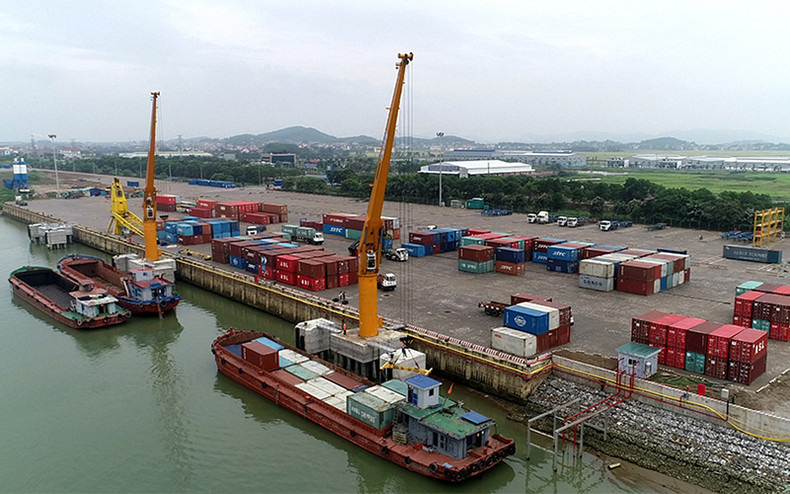In recent years, the logistic infrastructure in Hai Phong has been increasingly improved as the city has mobilised resources to modernise its seaports as well as the road network to meet the demand for connectivity between industrial parks and seaports.
Many logistical centres have been set up and come into operation in Hai Phong, along with about 250 enterprises having registering to provide logistic services, of which many belong to multinational logistics firms.
Hai Phong Vice Chairman Nguyen Duc Tho said that Hai Phong is gradually becoming a regional and international logistics centre, which has made a significant contribution to the city’s socio-economic development.
The amount of goods handled by seaports in Hai Phong rose from 79 million tonnes in 2016 to 142.8 million tonnes in 2020, equivalent to an annual average growth rate of 17.55%. During the first ten months of 2021, the figure reached 119.4 million, up 7.06% over the same period last year.
Growing by 23% annually, logistics services have helped Hai Phong achieve an impressive economic growth rate of 12.28% since the start of 2021, more than eight times the national average.
In neighbouring Quang Ninh Province, resolutions have been introduced to develop the marine economy, seaports and seaport services as well as logistics services so as to maximise its advantages.
The provincial Party Secretary Nguyen Xuan Ky affirmed that Quang Ninh is striving to develop logistics services by building roads and air routes connecting with international seaports and border gates as well as continually improving the business climate and reforming administrative procedures to attract both domestic and foreign investors.
During the 2016-2020 period, goods handled at Quang Ninh’s ports grew by an average of 16% annually. In the first nine months of 2021, Quang Ninh handled 60 million tonnes of goods through its ports.
In late October 2021, Quang Ninh commenced construction on the 83-hectare Van Ninh General Port in Mong Cai City. The province is also spending significant resources on developing the Hai Ha seaport industrial park into a major industrial seaport of the Northern Key Economic Region and of Vietnam. At the same time, the Dam Nha Mac area in Quang Yen Town is being developed into a multi-functional industrial and services centre which is connected with Hai Phong’s Dinh Vu Port area.
Hanoi currently has the Hateco logistics centre in Long Bien District and the Yen Vien railway logistics centre in Gia Lam District. In the neighbouring province of Bac Ninh, there are more than 50 logistics companies currently in operation, with big names such as Tan Cang, DABACO and Backy Logistics.

An inland port in Bac Ninh Province (Photo: Thai Son)
Despite having great potential, logistic operations in the Northern Key Economic Region remain small-scale and fragmented, without forming an uninterrupted chain.
With the goal of making logistics a leading economic sector, Hai Phong, Quang Ninh, Bac Ninh and Hanoi are all seeking to address shortcomings and maximise their strengths so as to modernise logistics services and meet the development trends of global trade.
Hai Phong Vice Chairman Nguyen Duc Tho said the city is striving to become a key marine economic region and logistics centre of Vietnam by 2025. Hanoi is also targeting to become one of the three major logistics centres of the country while Quang Ninh is looking to enhance its competitiveness and develop logistics services.
In order to realise these goals, Quang Ninh is forming six logistics centres in Cai Lan, Van Don, Quang Yen, the Mong Cai-Dongxing economic cooperation zone, Hai Ha and Binh Lieu. Hai Phong is developing 17 types of services in logistics operation chains while also introducing policies to encourage multimodal transport and mobilise investment in warehouses, communications and IT infrastructure. Hai Phong is aiming for annual logistics growth of 30-35%, and contributions of 20-25% to its economy.
Hanoi is planning to build a logistics centre in the north and one in the south, with each covering around 20-50 hectares. Such centres will connect with inland container depots, seaports, airports, bus stations, railway stations and industrial parks.
An air logistics hub will also be built at Noi Bai International Airport to realise the targets of having logistics account for 9-11% of the capital city’s economy while growing by 17-21%, and making Hanoi a major international logistics centre of the northern region.
















